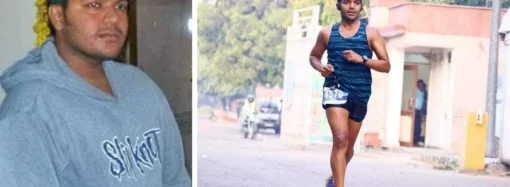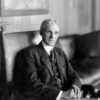His legacy lives on in the spirit of every air warrior who dares to defend the skies above India.
In the biting chill of a Kashmir winter, on December 14th, 1971, a young Indian Air Force officer soared into the skies over Srinagar, not in search of glory, but to fulfil his duty to his country. That officer was Flying Officer Nirmal Jit Singh Sekhon—the only Indian Air Force warrior to be awarded the Param Vir Chakra, India’s highest military decoration for valor.
Born into a humble Sikh family in Ludhiana, Punjab, Nirmal Jit Singh Sekhon had always dreamt of flying. His spirit, however, was not fueled merely by fascination with the skies. It was driven by a deeper call—a will to defend his homeland. After joining the Indian Air Force in 1967, he was commissioned into No. 18 Squadron, famously known as the “Flying Bullets.” Stationed at the strategic Srinagar airbase, he piloted the Gnats, tiny but nimble fighter jets that had earned a reputation for their ferocity in dogfights.
The 1971 Indo-Pak war was raging on two fronts. While Indian forces made swift advances in the East, in the West, Pakistan launched aerial attacks aimed at disabling key airbases in Kashmir. Srinagar was a prime target. On that fateful December morning, six Pakistani Sabre jets thundered across the sky, determined to bomb the airfield into silence. The situation was dire: the enemy had the element of surprise and numerical superiority.

But Flying Officer Sekhon didn’t wait for orders. He strapped into his Gnat fighter and raced down the icy runway. The Sabres had already begun their bombing run when Sekhon’s aircraft took off. What followed was a display of sheer courage and unmatched skill. Alone and outnumbered, Sekhon engaged the Pakistani formation in a breathtaking dogfight.
He weaved through the sky, diving and turning, his tiny Gnat outmanoeuvring the much larger Sabres. He scored direct hits on two enemy aircraft, sending one crashing and damaging the other. The remaining enemy jets regrouped and turned their guns on him. But Sekhon didn’t flinch. Knowing the odds, he fought on—his resolve unshaken, his aim unerring.
Ultimately, Sekhon’s aircraft was hit. It went down in flames, crashing into the valley below. His body was never recovered. But his sacrifice did not go in vain. Inspired by his gallantry, ground defences retaliated with renewed vigour, and the airbase was saved. His actions that morning became the very embodiment of valour, sacrifice, and patriotism.

The nation mourned the loss of a hero, but his story didn’t fade into silence. The Param Vir Chakra was awarded to Flying Officer Nirmal Jit Singh Sekhon posthumously—making him the only IAF officer to be honored with the prestigious decoration. His legacy lives on in the spirit of every air warrior who dares to defend the skies above India.
A statue of Sekhon now stands tall in the city of Chandigarh, gazing skyward, a symbol of fearlessness. His story is etched into the annals of military history—not just for the battle he fought, but for the message he left behind: that true courage is not the absence of fear, but the will to rise against it.
Flying Officer Sekhon was just 26 years old when he laid down his life. Yet, in those brief moments over Srinagar, he redefined what it means to serve, to fight, and to sacrifice.

He flew not just a machine of metal, but the hopes of a nation. He did not just fall from the sky, but into the hearts of millions.
And in every whispering gust that brushes the snowy peaks of Kashmir, his spirit still soars.
























 Arabic
Arabic Azerbaijani
Azerbaijani Chinese (Simplified)
Chinese (Simplified) Dutch
Dutch Finnish
Finnish French
French Georgian
Georgian German
German Hindi
Hindi Indonesian
Indonesian Irish
Irish Italian
Italian Japanese
Japanese Korean
Korean Latin
Latin Lithuanian
Lithuanian Portuguese
Portuguese Romanian
Romanian Russian
Russian Spanish
Spanish Swedish
Swedish Thai
Thai Turkish
Turkish Vietnamese
Vietnamese
Leave a Comment
Your email address will not be published. Required fields are marked with *